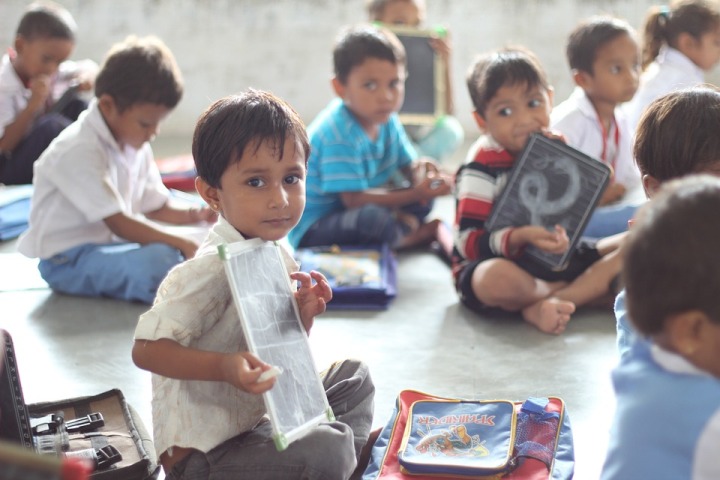Path to SDG 4: How to reduce discrimination in education?
Discrimination has been the biggest hurdle in the path of quality education which has been accepted as Goal 4 of 17 SDGs set up by the United Nations for the year 2030.

- Country:
- Australia
Quality Education is the most important investment for sustainable development on this planet. This is due to the importance of education in the development of a child, the quality education has been accepted as fourth SDG (Sustainable Development Goal) after No Poverty, Zero Hunger and Good Health and Well Being. The emphasis of quality education in the SDGs 2030 clearly indicates that after basic requirements and good health the quality education should be the top priority for a healthy child.
Discrimination has been the biggest hurdle in the path of quality education. Discrimination can be described as treating somebody unfairly due to their race, gender, sexual preferences, disability, or some other characteristic they cannot exactly change. Unfortunately, discrimination is still very common in schools in the form of bullying or alienating somebody because they are different from the majority. However, since discrimination is a learned behaviour, the opposite –acceptance and the importance of equality – can be learned as well. With that in mind, here are a few ways in which discrimination in education can be reduced.
Increasing self-awareness
The first step towards reducing discrimination in schools is teaching students self-awareness and self-reflection. They need to understand how our race, ethnicity, socio-economic status, gender, and all the other non-changeable characteristics affect us individually. They need to understand what it means to be privileged, and what it means to belong to marginalized groups that experience life in a completely different way. Being aware of those differences, and recognizing their own social standing can help children understand their peers who come from a different background and experience the world in a different way.
Hiring professional teachers
In order to teach self-awareness properly, there need to be teachers with high cultural competence who know how to teach their students about diversity and multiculturalism. Such teachers should know how to create different learning opportunities that would acknowledge all races and ethnicities, so students can get more familiar with social justice. They should address all social issues from race to sexuality in a thoughtful way – they should analyze the development of such issues through history, movements that managed to promote tolerance, and the consequences of ignoring those issues.
The thing is, bias very often comes from the lack of information and the lack of understanding. So, the more children know about discrimination, the less likely they are to discriminate. Of course, such topics can be uncomfortable, but with some careful planning and active listening, they can benefit everybody in more ways than one.
Influencing peer groups
One of the biggest influencers on children and their behaviour is – other children. Research has shown that when told by teachers to be nice and inclusive, children were much kinder to groups that opposed them in a game or competition. However, this was only true in case their own group members could not see their answer to the research survey. In other words, children who are a part of a certain social group tend to very often dislike other groups just because they think that’s what their own group members would want them to do.
So, in order to minimize prejudice and discrimination between different groups, schools need to start emphasizing and endorsing inclusion and equality. There need to be actual consequences for those who disobey the rules, like anti-discrimination training or some kind of social equality workshop. Now, this alone is not enough – attitudes never change by force. However, once all the other, less “aggressive” steps start showing positive results, these rules can serve as a good extra measure that would discourage peer bullying.
Adding more scholarships
Discrimination often makes children isolate themselves and lose motivation in pursuing higher knowledge. They might be afraid of being discriminated further, or they might even start believing in the stereotypes they hear from bullies. One way to encourage children to pursue higher education is to offer them better opportunities. For example, girls are very often victims of gender discrimination. So, in schools where that is common, the system could spread awareness of a variety of girl's scholarships that could encourage girls to keep studying in order to improve their lifestyle.
Involve the students
Last but not least, students need to be involved in order to actually understand. Of course, learning about history is essential, but they also need to see how to present discrimination is even today. For example, a school could invite guest speakers from discriminated groups to talk about their experiences and how they feel when they get openly discriminated. By showing students various representations of how discrimination affects their culture, you are more likely to change their attitudes – and not just in school, but outside as well. They would see that discrimination can happen to anybody – their best friend, favourite teacher and next-door neighbour. In short, it would be an engaging learning experience that would allow students to see that discrimination is very real and that the change starts with them.
Unfortunately, discrimination is still very common in all areas of life and all fields of business. However, it always starts at an early age. This is why the only way to reduce it – and eventually prevent it – is through education. It’s not something that can happen overnight, but it is something that needs to happen in order for everybody to have equal chances for success and a happy life in general.
- FIRST PUBLISHED IN:
- Devdiscourse News Desk










